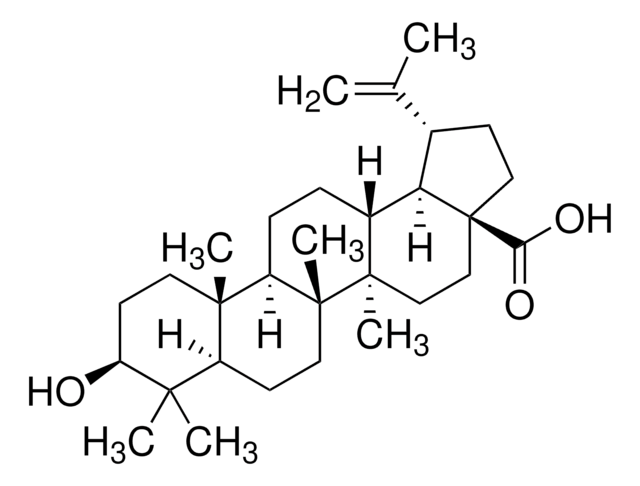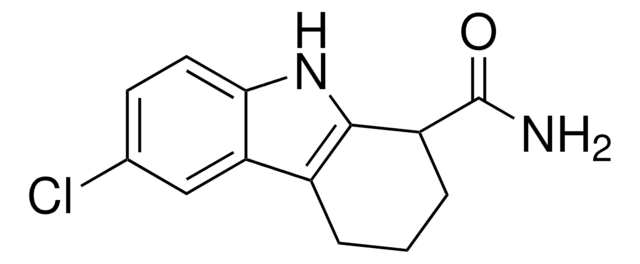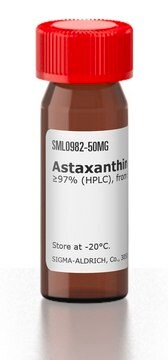SRP4324
Apo-SAA human
recombinant, expressed in E. coli, ≥98% (SDS-PAGE), ≥98% (HPLC)
Synonym(s):
Amyloid fibril protein AA, Amyloid protein A, SAA, SAA1, SAA2, Serum amyloid A protein
About This Item
Recommended Products
biological source
human
recombinant
expressed in E. coli
Assay
≥98% (HPLC)
≥98% (SDS-PAGE)
form
lyophilized
mol wt
~11.5 kDa
packaging
pkg of 50 μg
storage condition
avoid repeated freeze/thaw cycles
technique(s)
protein expression: suitable
impurities
endotoxin, tested
NCBI accession no.
shipped in
wet ice
storage temp.
−20°C
Gene Information
human ... SAA1(6288)
General description
Serum amyloid A (SAA) proteins are a group of apolipoproteins produced in response to cytokines released by activated monocytes/macrophages. SAA is a highly conserved acute-phase protein primarily synthesized by the liver.
Application
Biochem/physiol Actions
Physical form
Reconstitution
Storage Class Code
11 - Combustible Solids
WGK
WGK 3
Flash Point(F)
Not applicable
Flash Point(C)
Not applicable
Choose from one of the most recent versions:
Certificates of Analysis (COA)
Don't see the Right Version?
If you require a particular version, you can look up a specific certificate by the Lot or Batch number.
Already Own This Product?
Find documentation for the products that you have recently purchased in the Document Library.
Our team of scientists has experience in all areas of research including Life Science, Material Science, Chemical Synthesis, Chromatography, Analytical and many others.
Contact Technical Service








